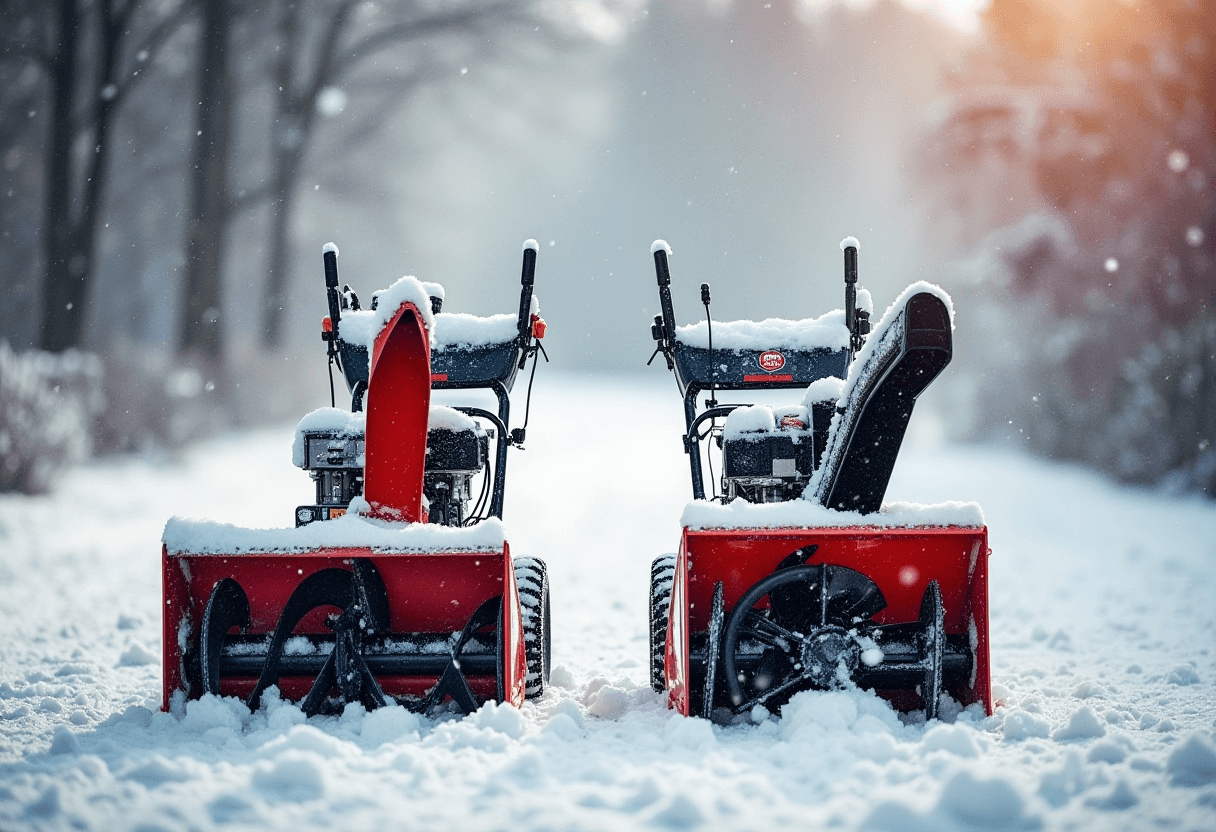How-To Guides
How to Snowblow a Driveway the Right Way
AZparts Team
Updated on July 11, 2025
7 min read
Knowing how to snowblow a driveway properly can save you time, reduce strain, and help prevent damage to your property during the winter months. Whether you're facing your first heavy snowfall or just want to improve your routine, using the right technique and equipment makes all the difference. In this guide, AZParts’ll show you how to prepare, operate, and maintain your snow blower for smooth, safe snow clearing.
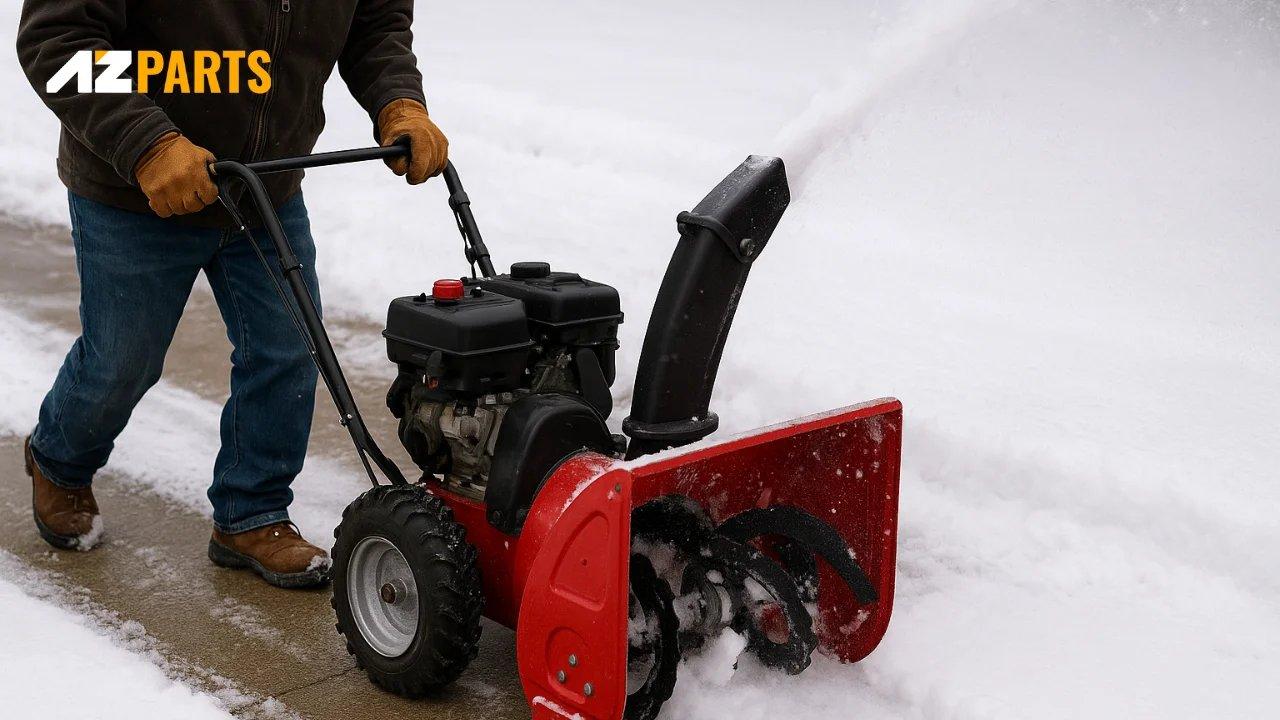
1. How to Snowblow Your Driveway
Clearing your driveway with a snowblower can be fast and efficient when you prepare correctly. Before you start the machine, it is important to get organized to ensure safety and better results. Taking just a few minutes to plan can save you from frustration or damage later on.
1.1. Prepare Before You Start
Before operating your snowblower, you should go through several important steps to ensure safety, efficiency, and avoid damage to your equipment or property:
- Check the wind direction and plan where to pile the snow: Before turning on your snowblower, take note of the wind direction. This helps you aim the snow discharge away from cleared areas, walkways, or your home. Planning where to pile the snow ahead of time can also help avoid blocking paths or creating large banks that may be hard to manage later.
- Fuel up and inspect your snowblower thoroughly: You should check the oil level before each use, especially if your machine has a 4-cycle engine. Snowblowers can burn oil without visible smoke, and running with low oil can damage the engine.
Before fueling, make sure the engine is cool. Always fill your snowblower with fuel outdoors to avoid vapor buildup in enclosed spaces. If the temperature is extremely cold, you can add a fuel stabilizer to prevent fuel from gelling.
- Mark the edges of your driveway with stakes.
Before the snow covers everything, insert stakes along the edges of your driveway. This helps guide your snowblower and prevents you from accidentally driving onto the lawn or into landscaping. The stakes should be tall enough to remain visible even after heavy snowfall.
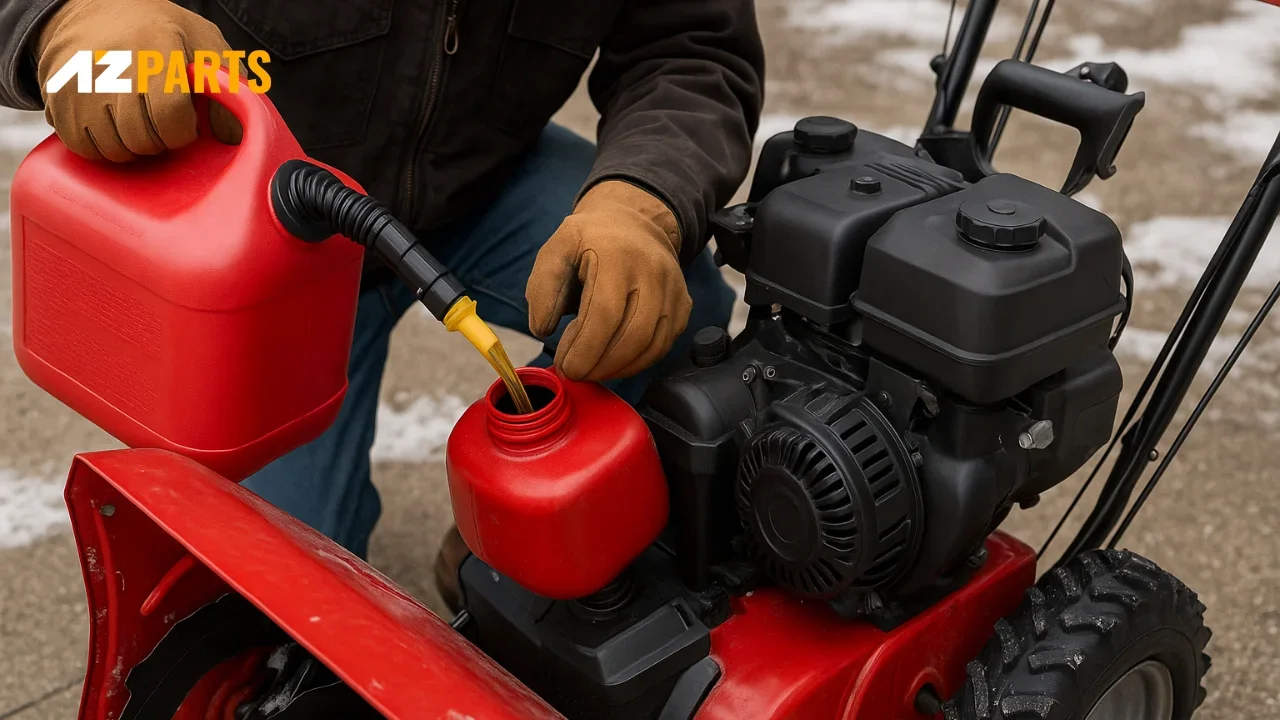
You should check the oil level and make sure the engine is cool before each use (Source: AZParts)
1.2. Use Smart Snowblowing Techniques
Once your snowblower is ready and the area is prepared, it is important to use proper techniques to maximize efficiency and avoid unnecessary effort. Using the right approach not only makes the job easier but also helps prevent clogs and uneven snow piles.
- Work side to side with the wind, or in circles if the wind is calm: If there is wind, you should blow snow in the same direction the wind is blowing. This reduces blowback and helps move the snow farther away. If the wind is calm, you can start in the center of the driveway and work outward in circles, always directing the snow chute away from the cleared area.
- Take small passes to prevent clogging: Avoid forcing the snowblower through large piles of snow all at once. Instead, you should make slow, steady passes and clear a small amount with each movement. This technique keeps the chute clear and prevents clogs.
- Throw snow as far as possible to avoid overlap: You should adjust the chute to throw the snow as far away from the driveway as possible. This prevents snow from falling back onto areas you have already cleared and reduces the need to go over the same spot multiple times.
- Clear snow early and often to prevent heavy buildup: Do not wait for snow to pile up several inches before using your snowblower. You should go out periodically during a storm and clear the snow every few inches. This makes each session easier and reduces strain on your machine.
- Use a shovel to clean up corners and tight spaces: After snowblowing, you may find leftover snow in narrow areas or around obstacles where the machine cannot reach. You should use a snow shovel to clean these areas manually. If you know these spots are hard to access, consider shoveling them first to save time later.
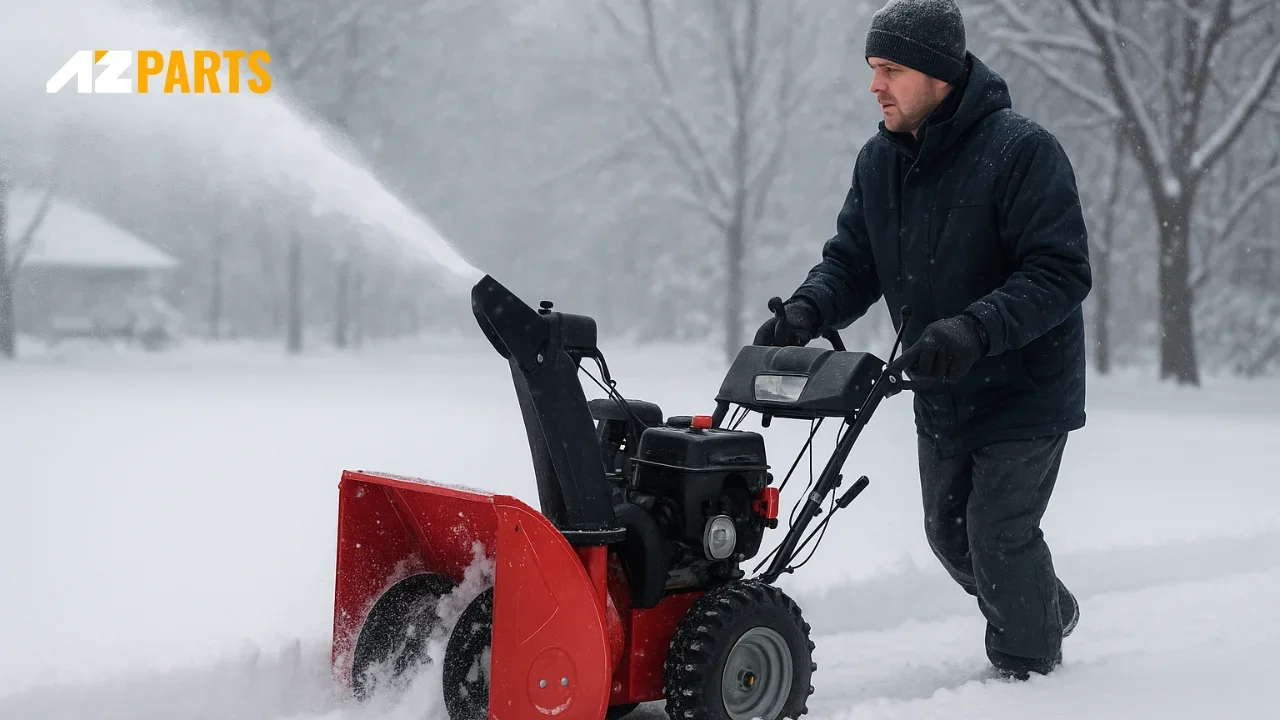
You should adjust the chute to throw the snow as far away from the driveway as possible (Source: AZParts)
1.3. Stay Safe While Working
Safety should always come first when using a snowblower. Snow removal equipment can be powerful and potentially dangerous if not handled properly. Before and during operation, you should take the following precautions to protect yourself and those around you.
- Remove hidden obstacles such as newspapers or debris: You should inspect the entire area before starting and remove any objects that could get caught in the machine. Items like newspapers, sticks, rocks, or toys can damage your snowblower or be thrown out at high speeds, creating serious hazards.
- Keep pets and children away from the working area: While you operate the snowblower, make sure that children and pets remain indoors or at a safe distance. This helps prevent accidents and distractions, ensuring a safer environment for everyone.
- Avoid wearing loose clothing: You should dress in fitted, layered clothing that keeps you warm without hanging loose. Loose jackets, scarves, or dangling sleeves can get caught in moving parts of the snowblower, leading to injury. Always tuck in scarves and secure any loose garments before you begin.
- Never refuel a hot engine: If your snowblower runs on fuel, you must always turn it off and allow the engine to cool down before refueling. Adding gasoline to a hot engine can cause dangerous vapor buildup or even result in a fire. Always refuel the machine outdoors in a well ventilated area.
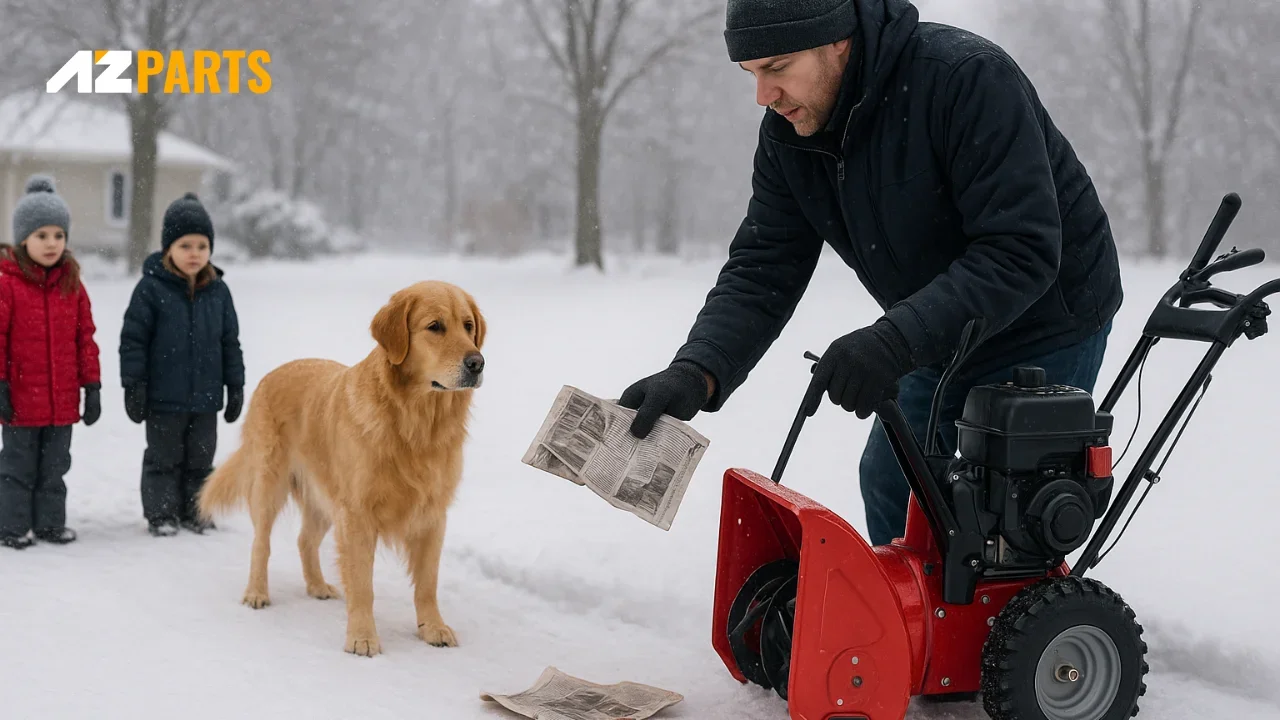
You should remove hidden obstacles, keep pets and children away from the working area (Source: AZParts)
2. Maintain Your Snow Blower
To ensure your snow blower performs well when you need it most, you should keep it in good working condition throughout the winter season. Regular maintenance not only improves efficiency but also extends the lifespan of your machine and helps you avoid unexpected breakdowns during heavy snowfalls.
2.1. Use Fresh Fuel With A Stabilizer
You should always fill your snow blower with fresh gasoline and add a fuel stabilizer, especially during colder months. This prevents the fuel from breaking down or gelling inside the engine, which can cause starting issues or damage.
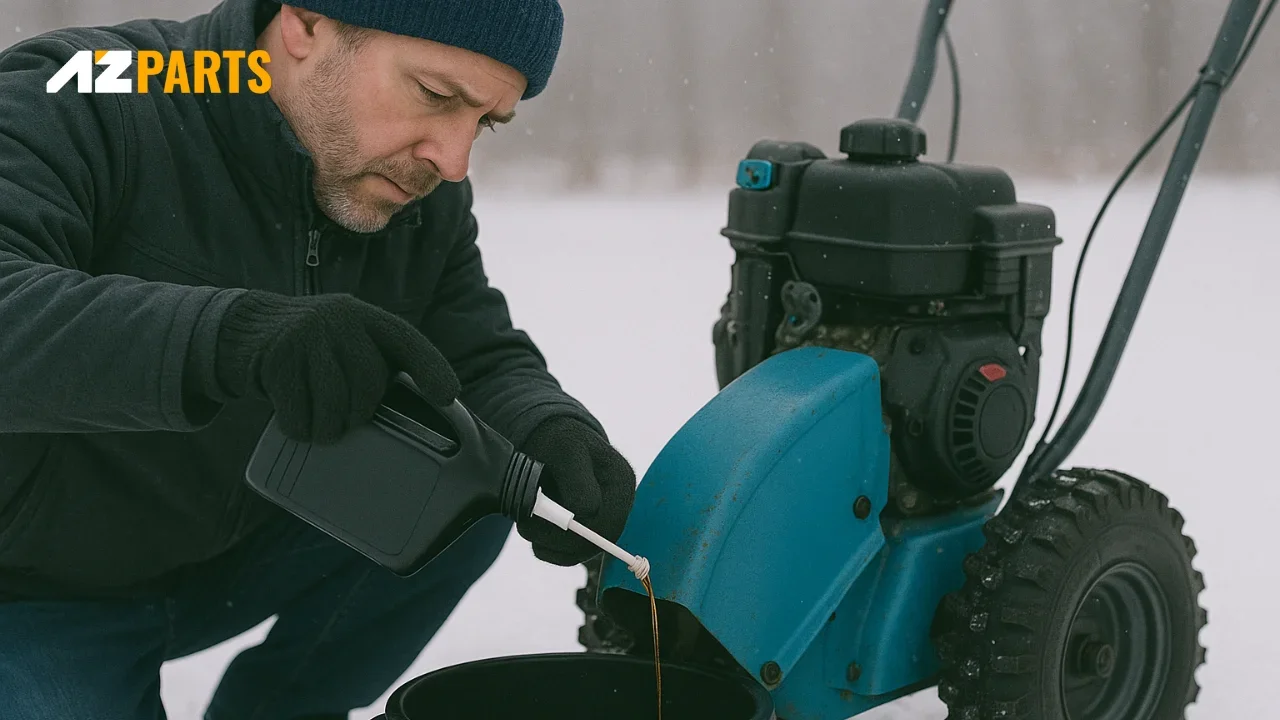
You should fill your snow blower with fresh gasoline and a fuel stabilizer (Source: AZParts)
2.2. Switch To Synthetic Oil For Easier Cold Starts
Consider using synthetic oil if you live in an area with extremely low temperatures. Synthetic oil flows better in the cold, allowing your snow blower to start more easily and run more smoothly in winter conditions.
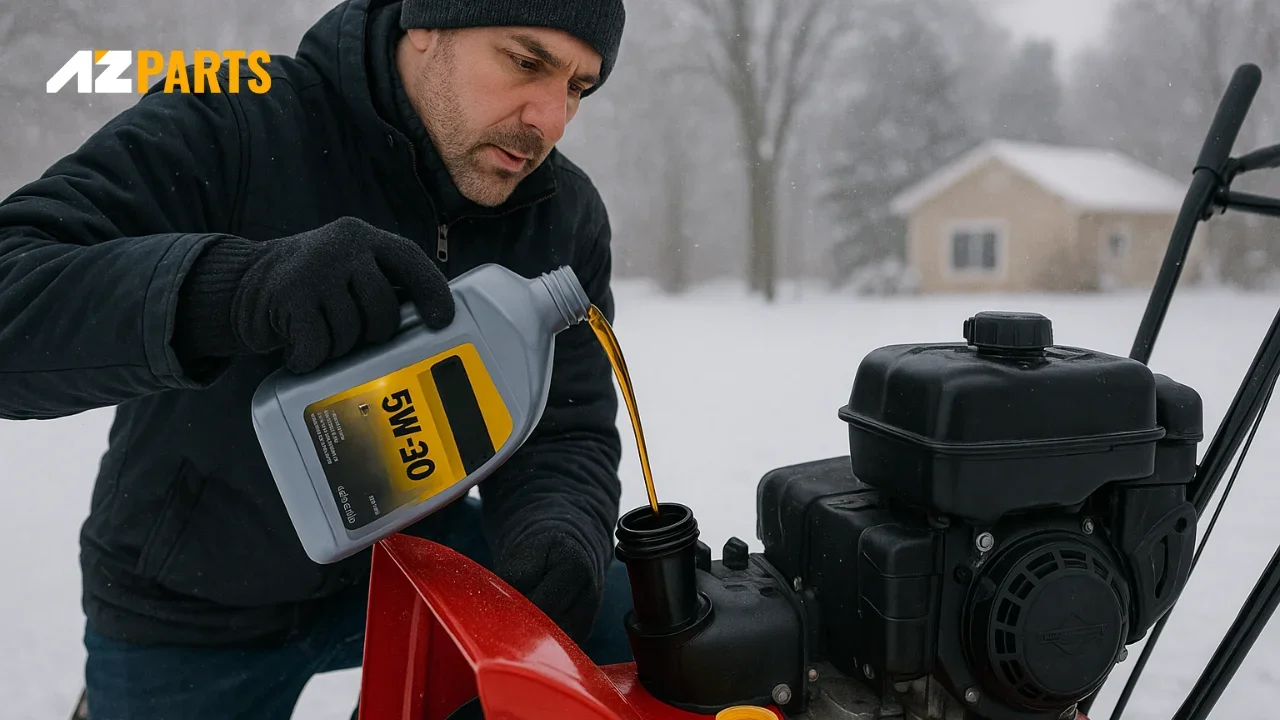
In winter conditions, you should switch to synthetic oil for easier starts (Source: AZParts)
2.3. Perform Seasonal Maintenance Before Snow Season
Before the first snowfall, you should inspect your snow blower thoroughly. Check the snowblower kit, snowblower carburetor, spark plug, belts, augers, and controls to make sure everything is working properly. This preparation helps prevent delays and repairs in the middle of snow season.
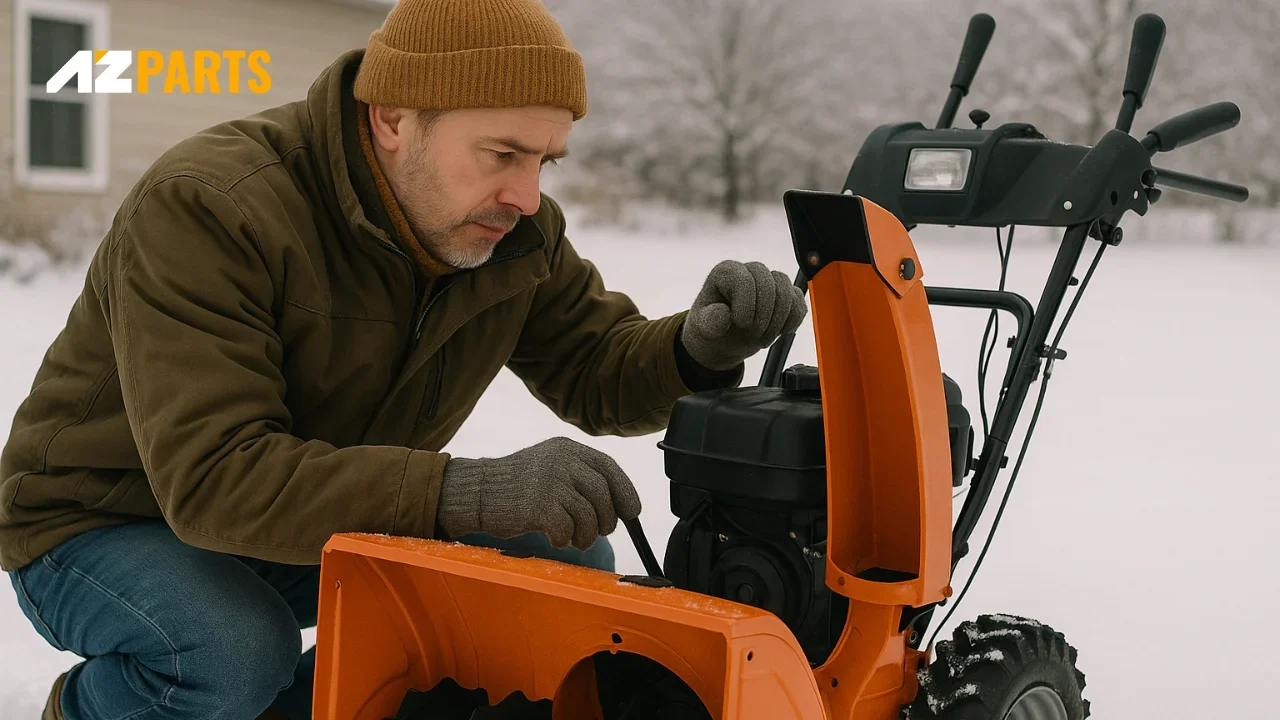
You have to check the spark plug, belts, augers, and controls of snowblower (Source: AZParts)
2.4. Keep Spare Parts On Hand Such As Belts And Shear Pins
Having extra parts readily available ensures you can quickly fix small issues without waiting for replacements. You should keep spare shear pins, belts, and spark plugs in your garage so you are prepared for common repairs.
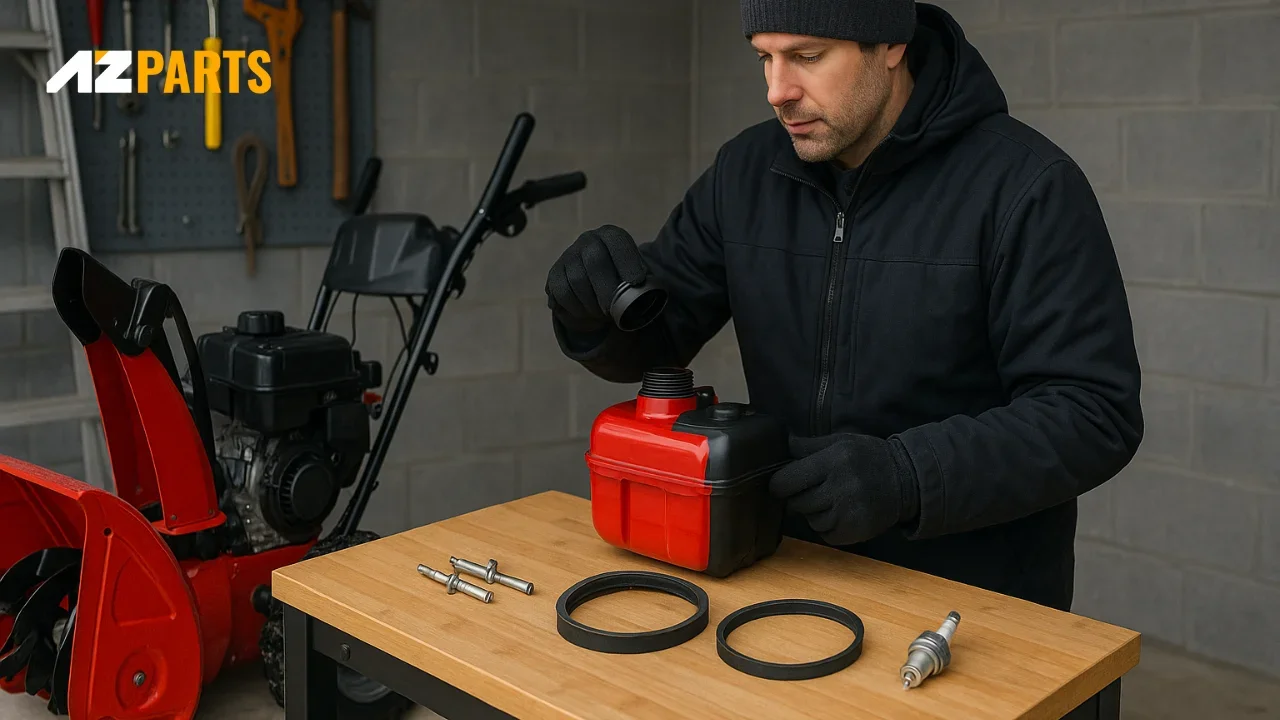
You should keep spare shear pins, belts, and spark plugs in your garage (Source: AZParts)
Now that you know how to snowblow a driveway the right way, you're ready to tackle even the heaviest snowfalls with confidence. Remember, proper preparation and smart techniques will help you stay safe and get the job done faster. For reliable snowblower replacement parts and maintenance tools, visit AZParts, your go-to source for quality equipment all season long.
Contact Information:
8 The Green, Ste A, Dover, Delaware 19901-3618, United States
Learn more about snowblower maintenance and repair:
Snowblower
Further Reading
Further Reading


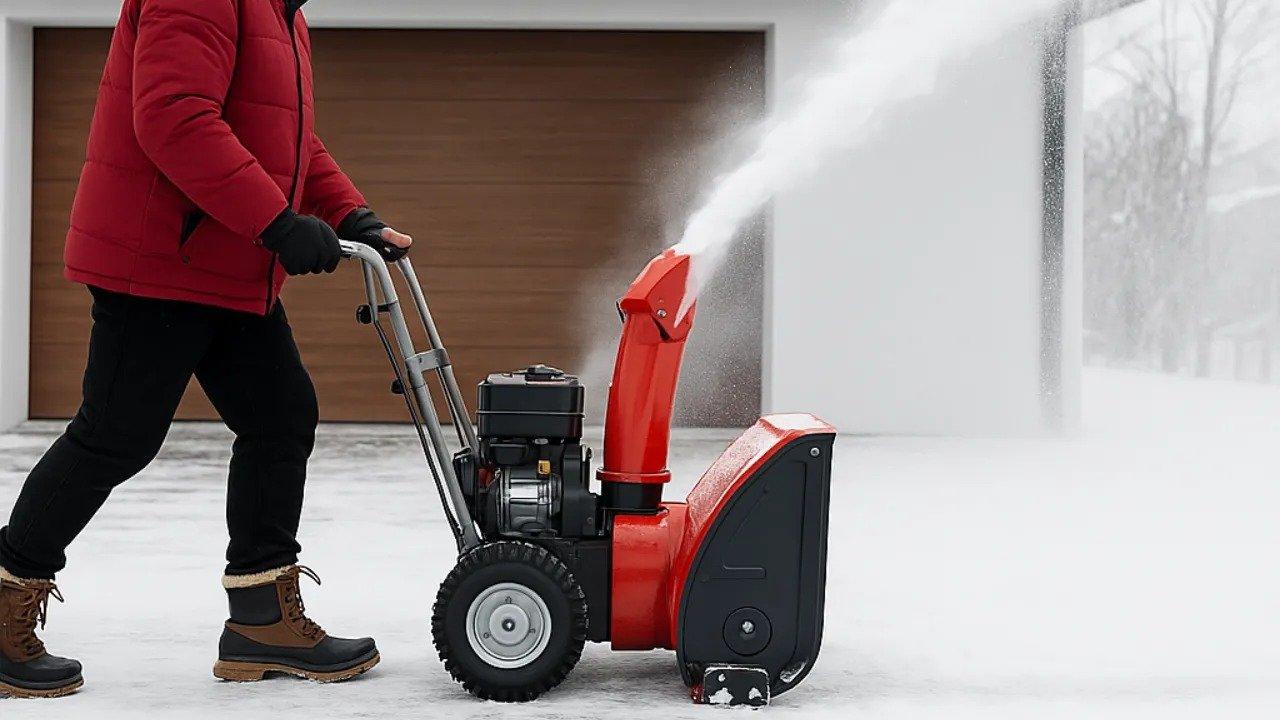
_1750053523.jpg&w=3840&q=75)
%2520Cropped_1747039495.jpg&w=3840&q=75)
